How to Handle Customer Service Stress Without Losing Your Cool 💬🧘♀️
Introduction
Customer service can be one of the most emotionally demanding jobs out there. You’re expected to stay calm, empathetic, and professional — even when customers are angry, impatient, or downright rude. Over time, the emotional weight of constant interactions can lead to burnout, irritability, or a sense of detachment.
But it doesn’t have to. 🌿 You can learn to handle customer service stress without losing your cool, by combining mindset tools, self-regulation techniques, and lifestyle support that protect your energy and restore balance.
This guide explores how to do exactly that — with practical insights drawn from neuroscience, emotional intelligence, and real-world communication skills.
Understanding Customer Service Stress 🧠🔥
At its core, customer service stress comes from emotional labor — the effort of managing your feelings to meet job expectations. You might have to sound cheerful when you’re tired, calm when you’re irritated, or understanding when someone is unfairly blaming you.
Over time, this constant regulation of emotion without an outlet creates cognitive overload. Your brain’s amygdala (the emotional alarm center) becomes more reactive, while the prefrontal cortex (responsible for reason and self-control) tires out.
That’s why after a long day, even minor frustrations — a spilled coffee or a slow internet connection — can feel overwhelming. You’ve spent all day managing other people’s emotions, leaving little bandwidth for your own.
Recognizing this isn’t weakness — it’s awareness. 🧩 Once you understand how stress builds in the nervous system, you can begin to regulate it before it reaches the boiling point.
Step 1: Rewire Your Mindset 🧭

The way you interpret customer interactions plays a massive role in how much stress they create. Most frustration doesn’t come from the event itself, but from the meaning you attach to it.
For example:
“This customer is disrespecting me” → triggers defensiveness.
“This customer is overwhelmed and venting frustration” → triggers empathy.
The facts may be identical, but the emotional impact shifts completely.
Try reframing customer interactions as temporary emotional exchanges, not personal attacks. Remind yourself:
You’re witnessing frustration, not receiving it.
You’re in control of your tone, pace, and energy — even if they aren’t.
Your goal isn’t to absorb emotion, but to redirect it calmly.
This mindset shift helps separate your identity from the interaction. You’re not the problem; you’re the solution-finder. 💪
Step 2: Breathe Before You React 🌬️
Stress responses begin in the body before they show up in the mind. Your heart rate increases, breathing quickens, and your body prepares for “fight or flight.” If you respond while in this state, your voice will tighten, your patience will vanish, and your brain will default to emotional reactivity.
To counter this, slow your breathing before responding.
Try this quick reset between calls or messages:
Inhale through your nose for 4 seconds.
Hold your breath for 2 seconds.
Exhale slowly through your mouth for 6 seconds.
This activates your parasympathetic nervous system, lowering heart rate and signaling your brain that you’re safe. Within 60 seconds, you’ll feel calmer and think more clearly — which can transform how you respond to difficult customers.
Breathwork isn’t just for yogis — it’s your built-in emotional reset button. 🧘
Step 3: Detach Emotionally (Without Becoming Robotic) 🧊💬
Healthy detachment doesn’t mean apathy. It means creating emotional distance so that you can respond intentionally instead of reactively.
Think of it like wearing a raincoat during a storm — you still experience the weather, but you don’t let it soak into your skin.
One method is the pause technique:
When a customer lashes out, take a brief pause before replying.
Use neutral phrases like “I understand how frustrating that must be.”
Avoid mirroring their tone — keep your voice slow, steady, and kind.
This short pause gives your nervous system time to regulate, and signals confidence to the customer. Most people unconsciously mirror energy, so when you remain calm, they often follow.
Step 4: Manage Your Energy, Not Just Your Time ⏰⚡️
Customer service stress often comes from energy depletion, not poor time management. Even if you work efficiently, nonstop emotional output drains your reserves.
To recover between interactions, micro-breaks matter more than long vacations. Try:
Stepping away for one minute of deep breathing or stretching.
Listening to calming music between calls.
Drinking water — dehydration worsens irritability and fatigue.
Your nervous system resets in small moments of stillness. When you honor those, you stay emotionally agile all day long.
Step 5: Use Supplements and Nutrition to Support Stress Resilience 💊🥦
Your mental resilience depends on your biology. Chronic stress depletes essential nutrients that support mood, focus, and calmness. You can restore balance with targeted supplementation and mindful nutrition.
Magnesium Glycinate: Helps calm the nervous system and improve sleep quality. Magnesium deficiency is strongly linked to irritability and anxiety.
B Vitamins (especially B6, B12, and Folate): Crucial for serotonin and dopamine production — the neurotransmitters that keep you motivated and emotionally stable.
L-Theanine (found in green tea): Increases alpha brain waves for relaxation without drowsiness, making it perfect for high-pressure work.
Adaptogens like Ashwagandha or Rhodiola: Regulate cortisol, improve mood, and sustain energy throughout long work shifts.
Omega-3 Fatty Acids: Reduce inflammation and support cognitive flexibility — essential for patience and problem-solving.
Combine these with nutrient-rich foods like leafy greens, nuts, salmon, and whole grains to create a strong biological foundation for emotional control. 🌱
Step 6: Master Communication That De-Escalates 🔥➡️💧
Words can either fan the fire or put it out. Mastering calm communication keeps you in control, even with the toughest customers.
1. Validate their feelings:
Say things like “I can see how that would be frustrating.” It acknowledges emotion without agreeing or blaming.
2. Stay solution-focused:
Shift from “I can’t do that” to “Here’s what I can do for you.” This reorients the conversation toward progress.
3. Lower your tone, slow your pace:
When you speak slowly and calmly, it subconsciously encourages the other person to mirror your state.
4. Don’t take the bait:
If someone is rude, remember: you’re not obligated to react emotionally. Professionalism isn’t submission — it’s self-control.
Every calm response strengthens your confidence. Each moment you stay centered under pressure, you’re rewiring your brain for resilience. 🧠
Step 7: Create Boundaries That Protect Your Peace 🧱🌿
You can’t pour from an empty cup. Without clear emotional and physical boundaries, customer service can quietly consume your well-being.
Ask yourself:
Do I check work messages after hours?
Do I mentally replay customer conversations long after they end?
Do I feel guilty taking time off?
If the answer is “yes” to any of these, it’s time to redefine your limits.
Boundaries might include:
Tech boundaries: Turning off notifications outside work hours.
Mental boundaries: Using a phrase like “That situation is resolved” to stop replaying it in your mind.
Emotional boundaries: Reminding yourself that someone else’s bad day isn’t your fault.
Healthy boundaries don’t make you less caring — they make your care sustainable.
Step 8: Therapy and Emotional Regulation 🛋️💬

Working in customer service means dealing with people’s emotions — and sometimes, your own emotional history gets triggered too. Therapy offers a safe space to unpack that.
A few types that can help:
Cognitive Behavioral Therapy (CBT): Helps identify and reframe thought patterns like “I always mess up” or “Customers hate me.”
Dialectical Behavior Therapy (DBT): Teaches distress tolerance and mindfulness — excellent tools for staying calm under pressure.
Somatic Therapy: Focuses on how stress lives in the body, helping you release tension through breath, grounding, and body awareness.
If therapy isn’t accessible, journaling can be a powerful alternative. Write down what situations trigger you most and what inner beliefs those triggers reveal. Over time, you’ll notice recurring themes — and clarity replaces chaos.
Step 9: Reconnect with Your Purpose 🌞
When you focus solely on the negatives — complaints, quotas, irate voices — it’s easy to forget the human side of your work. Reconnecting with purpose brings motivation back to life.
Ask yourself:
How does my work help people?
What am I learning about communication, empathy, and resilience through this experience?
How can I use these skills in my broader life goals?
Every interaction is a chance to practice patience, empathy, and leadership. You’re not just solving problems — you’re building emotional intelligence that will serve you far beyond the workplace. 💛
Step 10: Recovery Rituals for After Work 🌙
Don’t carry your day home with you. Create post-shift rituals that signal your nervous system it’s time to relax.
Some ideas:
Take a hot shower to wash off the “energy” of the day.
Do a few minutes of stretching or breathwork before leaving your workspace.
Listen to calming music or a podcast that makes you laugh.
Journal about one positive customer interaction, no matter how small.
These micro-rituals help your body downshift from “customer mode” to recovery mode — preventing stress from snowballing into chronic burnout.
The Science of Staying Cool Under Pressure ❄️
Your brain is wired to react emotionally to perceived threats — including angry customers. But repeated exposure to stress can build emotional resilience, just like lifting weights builds muscle.
Every time you respond calmly to chaos, you strengthen neural pathways that support patience, empathy, and problem-solving. Over time, your threshold for stress increases, and your recovery time shortens.
This is called neuroplasticity — your brain’s ability to adapt through experience. By practicing calm responses daily, you’re literally training your nervous system to stay cool under pressure. 🧘
Step 11: Build Team Support 🤝
Customer service shouldn’t be a solo endurance test. A supportive team culture can make the difference between burnout and belonging.
Encourage open conversations about stress at work. Normalize saying, “That call was rough; I need five minutes.” When team members feel safe expressing emotions, resilience grows collectively.
If you’re in a leadership position, schedule short debriefs where people can share frustrations or celebrate wins. Recognition and empathy go a long way toward preventing emotional exhaustion.
Remember: stress shared is stress halved. 💬
Step 12: Know When to Step Back 🛑
Sometimes the healthiest move is to take a break. If you notice constant irritability, headaches, or a sense of dread before work, your body is signaling overload.
You might need a few days off, a mental-health day, or even a shift to a different role with less emotional intensity. There’s no shame in protecting your mental well-being — it’s what allows you to show up sustainably for others.
Step 13: Long-Term Growth: Turning Stress Into Strength 🌈
Every challenging customer interaction is training for real-world resilience. You learn to stay composed under chaos, communicate clearly under pressure, and find calm in conflict — skills that serve you in relationships, leadership, and life.
Handling customer service stress isn’t about suppressing emotion — it’s about mastering it. When you transform reactivity into awareness, stress stops controlling you.
Over time, you’ll notice you recover faster, think clearer, and feel stronger. The same job that once drained you can become your personal dojo for emotional intelligence.
Conclusion 🌿💫
You can’t control every customer or situation — but you can control how you respond.
By combining mindset shifts, breathwork, nutrition, and emotional awareness, you build an inner calm that no angry email can shake.
The goal isn’t to be emotionless; it’s to stay empowered. Every time you handle stress gracefully, you prove to yourself that you are capable, composed, and resilient.
You’re not just surviving customer service — you’re mastering emotional strength in real time. 💬✨
References 📚
Gross JJ. (2015). Emotion Regulation: Current Status and Future Prospects. Psychological Inquiry, 26(1), 1–26.
Porges SW. (2011). The Polyvagal Theory: Neurophysiological Foundations of Emotions, Attachment, Communication, and Self-Regulation. W. W. Norton & Company.
Kabat-Zinn J. (2013). Full Catastrophe Living: Using the Wisdom of Your Body and Mind to Face Stress, Pain, and Illness. Bantam Books.
Panossian A., Wikman G. (2010). Effects of adaptogens on the central nervous system and the molecular mechanisms associated with their stress-protective activity. Pharmaceuticals, 3(1), 188–224.
Carney RM., Freedland KE. (2017). Behavioral approaches to stress and burnout prevention in customer-facing professions. Journal of Occupational Health Psychology, 22(4), 375–389.
Related Posts
-
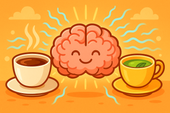
The Role of L-Theanine and Caffeine in Daily Motivation
Cortisol — often called the “stress hormone” — is both your alarm system and your reset button ⚡. It keeps you alert in the morning and helps you recover after challenges, but when it stays high too long, it drains your mood and energy. Learn how to balance cortisol naturally for steady focus, calm, and motivation. 🌿
-
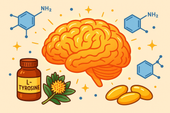
Supplements That Support Dopamine for Drive and Reward
Curcumin — the golden compound in turmeric — is more than a spice 🌿✨. It’s a powerful anti-inflammatory that protects dopamine neurons, supports brain clarity, and enhances mood. Learn how curcumin’s antioxidant properties help stabilize energy, reduce brain fog, and promote emotional resilience naturally. 🌼
-
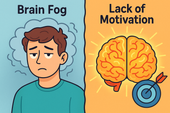
Brain Fog vs Lack of Motivation: What’s Really Holding You Back?
Hormones are the body’s invisible messengers — shaping energy, mood, focus, and motivation 🧠🌿. When they’re balanced, you feel clear, confident, and emotionally steady. Learn how key hormones like cortisol, serotonin, dopamine, and estrogen interact to influence your mental well-being and what you can do to keep them in harmony naturally. ✨
-
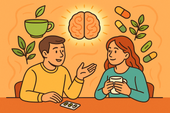
Supplements for Staying Collected During Disagreements
Science helps us understand why we feel, react, and change 🌿🧠. From brain chemistry to neurotransmitters and hormones, every emotional response has a biological root. Explore how research in neuroscience and psychology reveals practical ways to stay balanced, focused, and emotionally strong in daily life. 🔬✨
-

Managing Anger While Traveling
Supplements can help calm your nervous system and keep your emotions balanced while on the go 🌿. From magnesium and ashwagandha to L-theanine and omega-3s, learn how natural nutrients support stress resilience, focus, and emotional control — even through long flights, delays, and unpredictable travel days. ✈️
-
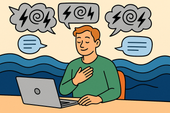
How to Keep Your Temper in Online Debates
Supplements can do more than fill nutritional gaps — they can help balance your energy, focus, and stress response naturally 🌿. From adaptogens to amino acids, the right nutrients support your brain chemistry and hormonal harmony for calm, steady productivity. Discover how supplements can build long-term resilience without the crash. ⚡🧠
-

Supplements to Stay Calm Before Public Speaking
Breathwork is one of the simplest yet most powerful tools for calming pre-performance stress 🌬️. By slowing and deepening your breathing, you lower cortisol, steady your heartbeat, and re-center your mind. Learn the science behind how controlled breathing activates your parasympathetic nervous system — helping you speak, perform, or focus with grounded confidence. 🌿
-
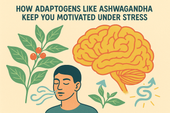
How Adaptogens Like Ashwagandha Keep You Motivated Under Stress
Feeling overwhelmed and unmotivated? 🌿 Discover how adaptogens like Ashwagandha can help you stay centered, focused, and energized under stress. Learn how supplements, breathwork, and therapy work together to restore your natural motivation and help you thrive — even during life’s toughest moments. 💪✨
-
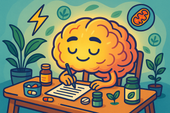
Supplements That Support Long-Term Productivity Without the Crash ⚡🌿
Cortisol — your body’s main stress hormone — can be both your best friend and worst enemy. ⚡ When balanced, it keeps you focused, energized, and ready to act. But when it stays high for too long, it leads to fatigue, anxiety, and emotional crashes. Learn how to regulate cortisol naturally through supplements, sleep, and stress management to maintain calm, steady productivity. 🌿
-
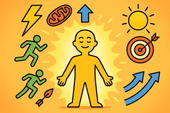
Why Energy Levels and Motivation Go Hand in Hand ⚡🧠
B-vitamins are the brain’s spark plugs 🔋. They turn food into fuel, support neurotransmitter production, and keep your mood, energy, and focus balanced. Learn how vitamins like B6, B9, and B12 work together to power the nervous system, reduce fatigue, and keep motivation high. 🌿
-
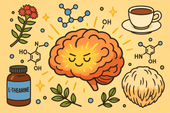
The Science of Motivation: Can Nootropics Help You Stay Focused? 🧠⚡
Nootropics are nature’s tools for sharper thinking and sustainable focus 🧠🌿. From Rhodiola and Lion’s Mane to L-theanine and Bacopa, these brain-boosting compounds enhance motivation, memory, and stress resilience. Learn the science behind how nootropics work — and how to use them safely for peak mental performance and clarity. ⚡
-
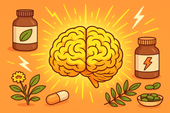
How Natural Supplements Can Boost Your Daily Drive
Cortisol is your body’s main stress hormone — powerful, necessary, but often misunderstood. ⚡ When balanced, it keeps you alert and energized; when chronically elevated, it drains mood, motivation, and focus. Learn how to regulate cortisol naturally through nutrition, supplements, and calming lifestyle habits for steady energy and emotional balance. 🌿
-
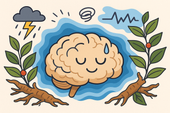
Ashwagandha for Stress and Low Mood
Breathwork is more than a relaxation tool — it’s a way to rewire your nervous system. 🌬️ Through intentional breathing, you can reduce stress hormones, improve focus, and calm emotional turbulence. This guide explores the science of breathwork and its powerful effects on mental clarity, resilience, and emotional regulation. 🌿
-
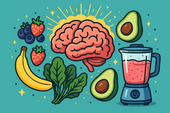
Mood-Boosting Smoothie Recipes
Your blood sugar affects far more than energy — it influences mood, focus, and emotional stability too 🍎. Learn how maintaining balanced glucose levels supports brain health, reduces anxiety, and prevents emotional crashes. Discover the foods and habits that keep your mind calm and your energy steady throughout the day. 🌿
-
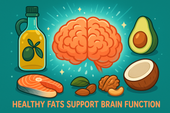
How Healthy Fats Support Brain Function
Your brain thrives on healthy fats 🧠💧. From omega-3s to MCTs, the right fats enhance focus, memory, and mood while protecting against inflammation and aging. This article explores how good fats — like those from olive oil, salmon, avocado, and nuts — build sharper thinking, emotional balance, and lasting brain vitality. 🌿
-
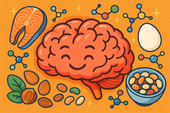
The Role of Protein in Mental Clarity
Protein isn’t just for muscles — it’s for your mind. 🧠 This guide explores how amino acids from high-quality protein fuel neurotransmitters, stabilize mood, and sharpen focus. Learn how balanced protein intake supports dopamine, serotonin, and energy regulation to boost mental clarity and emotional stability naturally. 🍳🌿
-
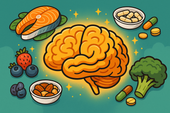
Nutrients That Support Emotional Stability
Your emotions are built from nutrients as much as from thoughts 🌿. This science-backed guide reveals the vitamins, minerals, and healthy fats that stabilize mood and reduce stress — from B-vitamins and magnesium to omega-3s and probiotics. Learn how balanced nutrition supports neurotransmitters, strengthens resilience, and promotes lasting calm and clarity 🧠✨.
-
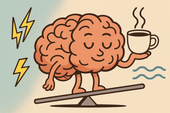
How Caffeine Affects Your Mood ☕
Your morning coffee might lift your spirits — but what’s really happening inside your brain? ☕ This in-depth guide explores how caffeine affects mood, motivation, dopamine, and stress. Learn how to enjoy caffeine mindfully without triggering anxiety, burnout, or emotional crashes. Discover the science behind your energy highs and lows — and how to find calm, sustainable focus. 🌿
-
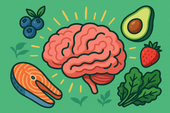
The Best Anti-Inflammatory Diet for Mental Health
Inflammation doesn’t just affect your body — it impacts your mood, focus, and emotional resilience too 🌿. This comprehensive guide reveals how an anti-inflammatory diet can support mental health by reducing neuroinflammation, balancing gut bacteria, and stabilizing blood sugar. Learn which foods to eat (and which to avoid) to protect your brain, boost serotonin, and promote lasting calm. 🧠✨
-

Why Sugar Spikes Can Worsen Depression
Sugar highs can make you feel good for a moment — but what comes next can fuel emotional crashes and deepen depression 🍭. This article explains how blood sugar spikes disrupt brain chemistry, increase inflammation, and destabilize serotonin. Learn how food, supplements, breathwork, and therapy can help you break the sugar–mood cycle and restore lasting emotional balance 🌿.
-
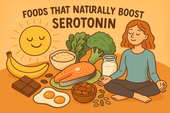
Foods That Naturally Boost Serotonin
Serotonin isn’t just a brain chemical — it’s your body’s built-in mood stabilizer 🌞. This in-depth guide explores how natural foods like salmon, eggs, bananas, and dark chocolate can elevate serotonin levels, while gut health, key nutrients, supplements, breathwork, and therapy create the perfect synergy for calm and emotional balance. Learn how to support your mind through diet, lifestyle, and mindset — naturally. 🌿
-
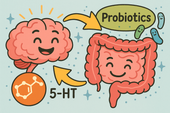
Probiotics for Mood Balance
-
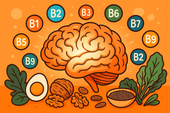
B-Vitamins and Their Role in Mental Health
Methylation is one of your body’s most important biochemical processes — influencing mood, energy, and focus. Powered by B-vitamins like B6, B9, and B12, it helps your brain create serotonin, detox efficiently, and maintain emotional balance. 🌿
-
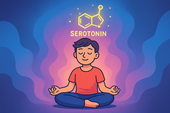
5-HTP for Serotonin Support
Calm isn’t just an emotion — it’s a physiological state where your body and mind finally sync in peace. By slowing your breath, softening your thoughts, and creating safety within, you restore the deep relaxation your nervous system craves. 🌿
-

St. John’s Wort for Mild Depression
Antidepressants can be life-changing for many — but understanding how they work and what natural options like St. John’s Wort can complement them is key. Learn how both approaches affect brain chemistry, mood balance, and long-term emotional wellness. 🌿
-
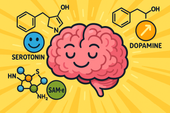
SAM-e: A Natural Mood Booster
Emotional regulation is the art of staying calm and grounded, even when life feels chaotic. By balancing your brain, body, and breath, you can respond with clarity instead of reacting from stress — building real emotional resilience and inner peace. 🌿
-

Rhodiola Rosea for Emotional Resilience
Neuroplasticity is your brain’s ability to grow, adapt, and heal — even after stress or trauma. Every thought, emotion, and habit reshapes your neural pathways, helping you build stronger emotional resilience, sharper focus, and lasting mental balance. 🌿
-
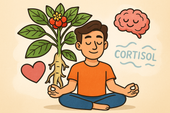
Ashwagandha for Stress and Low Mood
Adaptogens are nature’s stress balancers — powerful herbs like ashwagandha, rhodiola, and reishi that help your body adapt to tension, fatigue, and change. By regulating cortisol and supporting your nervous system, they build calm focus and emotional resilience from the inside out. 🌙
-
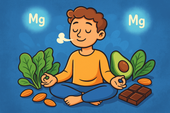
Magnesium’s Role in Emotional Regulation
Neuroscience helps us understand why we feel, think, and react the way we do. From brain chemistry and neural circuits to stress responses and emotional learning, the science of the brain reveals how our minds can heal, grow, and find balance. 🌿
-
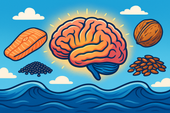
Omega-3 Fatty Acids and Emotional Well-Being
Nutrients aren’t just fuel — they’re communication signals that tell your brain and body how to function. From magnesium and vitamin D to omega-3s and B vitamins, the right mix of nutrients helps calm your mind, balance hormones, and support emotional and physical well-being. 🌙
-
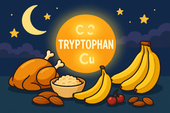
The Role of Tryptophan in Sleep Health
Mental health isn’t just the absence of illness — it’s the foundation of calm, focus, and emotional resilience. From managing stress and anxiety to nurturing self-compassion, understanding your mental well-being is the first step toward a balanced, more peaceful life. 🌿
-

Nutrients That Promote Nighttime Relaxation
Potassium does more than balance fluids — it also helps your body and mind relax at night. By calming nerves, reducing muscle tension, and supporting steady heart rhythm, potassium-rich foods like bananas, sweet potatoes, and coconut water can promote deeper, more restful sleep. 🌙
-
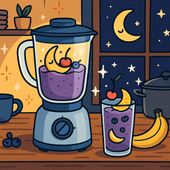
Sleep-Friendly Smoothie Recipes
Melatonin is your body’s natural sleep signal — a hormone that tells your brain when it’s time to rest. Learn how melatonin works, which foods and habits boost its production, and how to use it wisely for deeper, more restorative sleep without dependence. 💤
-
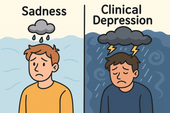
The Difference Between Sadness and Clinical Depression
Your emotions aren’t just in your mind — they’re written in your brain chemistry. Serotonin, dopamine, and GABA work together to regulate mood, motivation, and calm. When they fall out of balance, you may feel anxious, fatigued, or low. Learn how these brain chemicals influence your mental health and what you can do to restore harmony naturally. 🌿
-
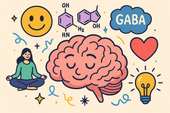
How Brain Chemistry Influences Mood
Your brain is a symphony of neurotransmitters — serotonin, dopamine, GABA, and more — working together to shape how you think and feel. When they’re balanced, you experience calm focus and emotional stability. When they’re not, mood swings and fatigue can follow. Learn how to naturally support these vital messengers for better mood and mental clarity. 🌿
-
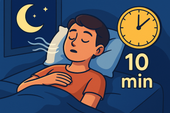
How to Fall Asleep in Under 10 Minutes
The military knows a few secrets about falling asleep fast — and they work even in chaos. This article explores the science behind rapid relaxation, including the famous “Military Sleep Method,” which teaches your body to shut down stress and rest on command. Learn how discipline, breath, and focus can help anyone fall asleep in minutes. 🌙
-
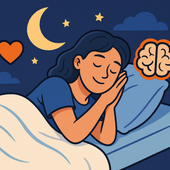
Why Emotional Resilience Improves Sleep
Emotional resilience isn’t just about mental strength—it’s also a key ingredient for better sleep. When your emotions are balanced, your body releases fewer stress hormones, your mind quiets faster, and your sleep becomes deeper and more restorative. Learn how to cultivate calm through mindset, breathwork, and daily habits. 🌙
-
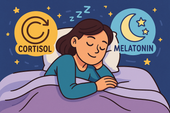
The Connection Between Stress Hormones and Sleep
Chronic stress can quietly reshape your body’s chemistry, raising cortisol, disrupting sleep, and draining your energy. This guide explores how long-term stress affects your nervous system, hormones, and rest—and how to restore calm through breathwork, nutrition, and daily recovery rituals. 🌿
-
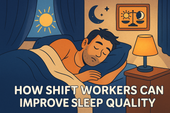
How Shift Workers Can Improve Sleep Quality
For shift workers, caffeine can be both a lifeline and a sleep disruptor. Learn how to use it strategically—boosting alertness during work hours without sabotaging rest. This guide explores timing, dosage, and smarter natural alternatives to keep your energy steady and your sleep restorative. 🌙
-
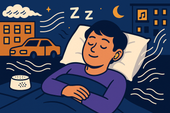
How to Sleep Better in a Noisy Environment
Living in a noisy area doesn’t mean sacrificing your rest. Learn practical and natural strategies to sleep better in loud environments—from using sound masking and breathwork to creating calming rituals that help your brain tune out the chaos. Find inner silence even when the world outside won’t quiet down. 🌙
-
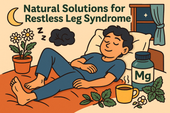
Natural Solutions for Restless Leg Syndrome (RLS)
Struggling to sleep deeply and wake refreshed? This soothing guide explores how the body restores itself during quality sleep—and how to support it naturally. Learn about the science of rest, the role of nutrients, and the rituals that promote deep, uninterrupted slumber. 🌙
-

How to Overcome Middle-of-the-Night Anxiety
Middle-of-the-night anxiety can make even the calmest mind spiral into worry. This guide reveals practical, evidence-based techniques to help you stop the 3 A.M. overthinking loop—from breathwork and journaling to herbal supplements and therapy-based tools. Learn to retrain your nervous system and find peace when the world is asleep. 🌙
-

The Perfect Evening Herbal Blend
Discover the calming power of nature in your teacup. The perfect evening herbal blend combines chamomile, lemon balm, lavender, and adaptogens like ashwagandha to relax your body and quiet your mind before bed. Learn how to craft and customize a soothing, sleep-enhancing tea ritual that helps you unwind, restore, and wake up refreshed. 🌙
-

How to Cycle Sleep Supplements for Maximum Effectiveness
Wondering why your sleep supplements stop working after a while? This guide breaks down how to cycle sleep aids like melatonin, magnesium, and ashwagandha for consistent, long-term results. Learn when to rest your body, how to prevent tolerance, and what natural methods—like breathwork and therapy—enhance your sleep cycles. 🌙
-
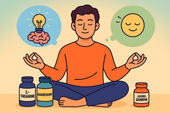
The Best Supplements for Both Relaxation and Focus
Calm your mind and sharpen your focus with the perfect blend of natural supplements. From L-theanine and magnesium to Rhodiola and Lion’s Mane, this science-based guide shows how to achieve relaxation and clarity at the same time. Discover stacks that support your nervous system, balance mood, and keep your mind laser-focused without the crash. 🌿
-

How to Sleep Better During Travel
Traveling can be thrilling—but sleepless nights can ruin even the best trips. From supplements like magnesium and melatonin to soothing breathwork and therapy-based techniques, this guide shows you how to sleep deeply on planes, in hotels, or across time zones. Learn to calm your body, reset your circadian rhythm, and build rest rituals that work anywhere in the world 🌙
-

Improving Sleep in Menopause with Supplements
Menopause can make peaceful sleep feel impossible — but balance is within reach 🌿. This article explores how supplements like magnesium, ashwagandha, and black cohosh can ease night sweats, calm the mind, and restore your natural sleep rhythm during hormonal changes.
-
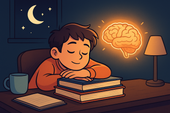
Sleep Support for Students During Exams
Exam stress can make it hard to rest — but sleep is what helps you perform your best 💤. This article explains how to improve sleep quality during exams through better study habits, natural supplements, breathwork, and therapy tools to calm the mind and sharpen focus.
-
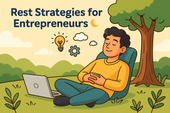
Rest Strategies for Entrepreneurs
Entrepreneurs often burn out chasing their vision — but rest is the real fuel for success 🌙. This article explores science-backed recovery strategies for founders, including sleep, breathwork, therapy, and nutrition techniques that sharpen creativity and sustain performance.

















































